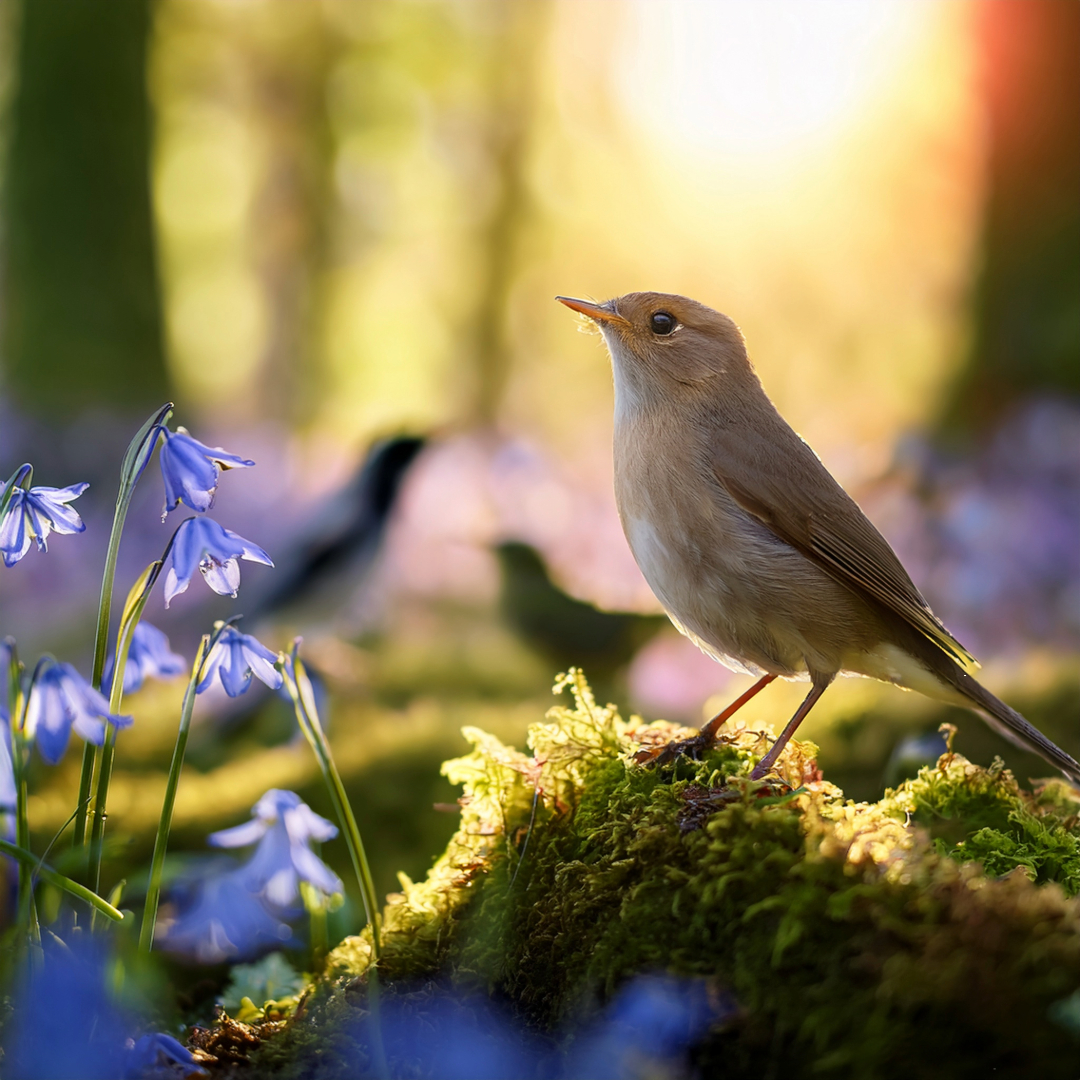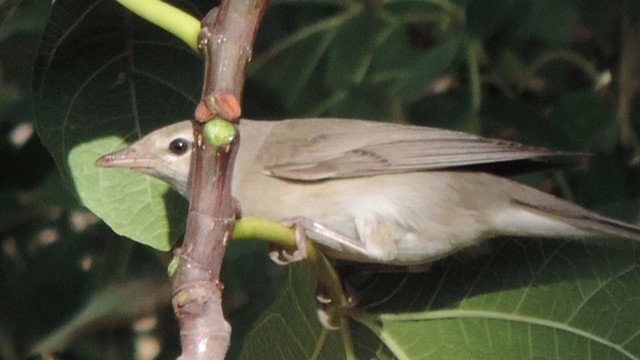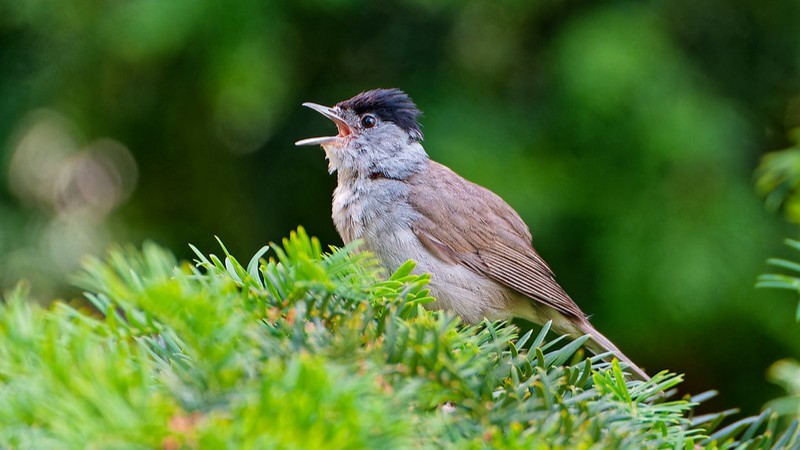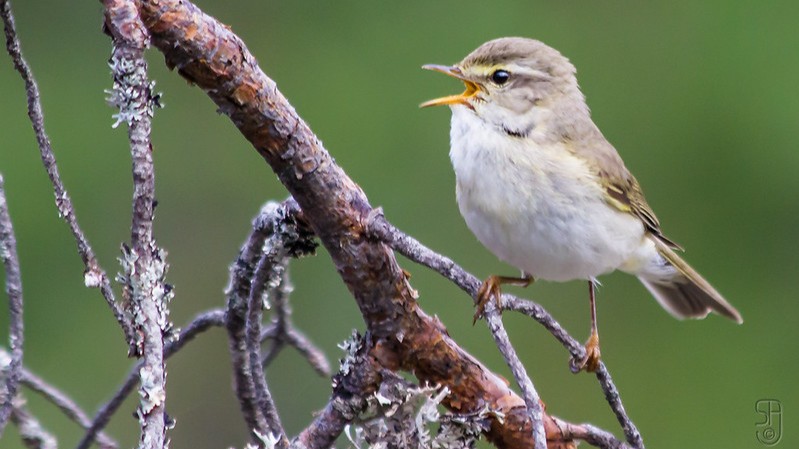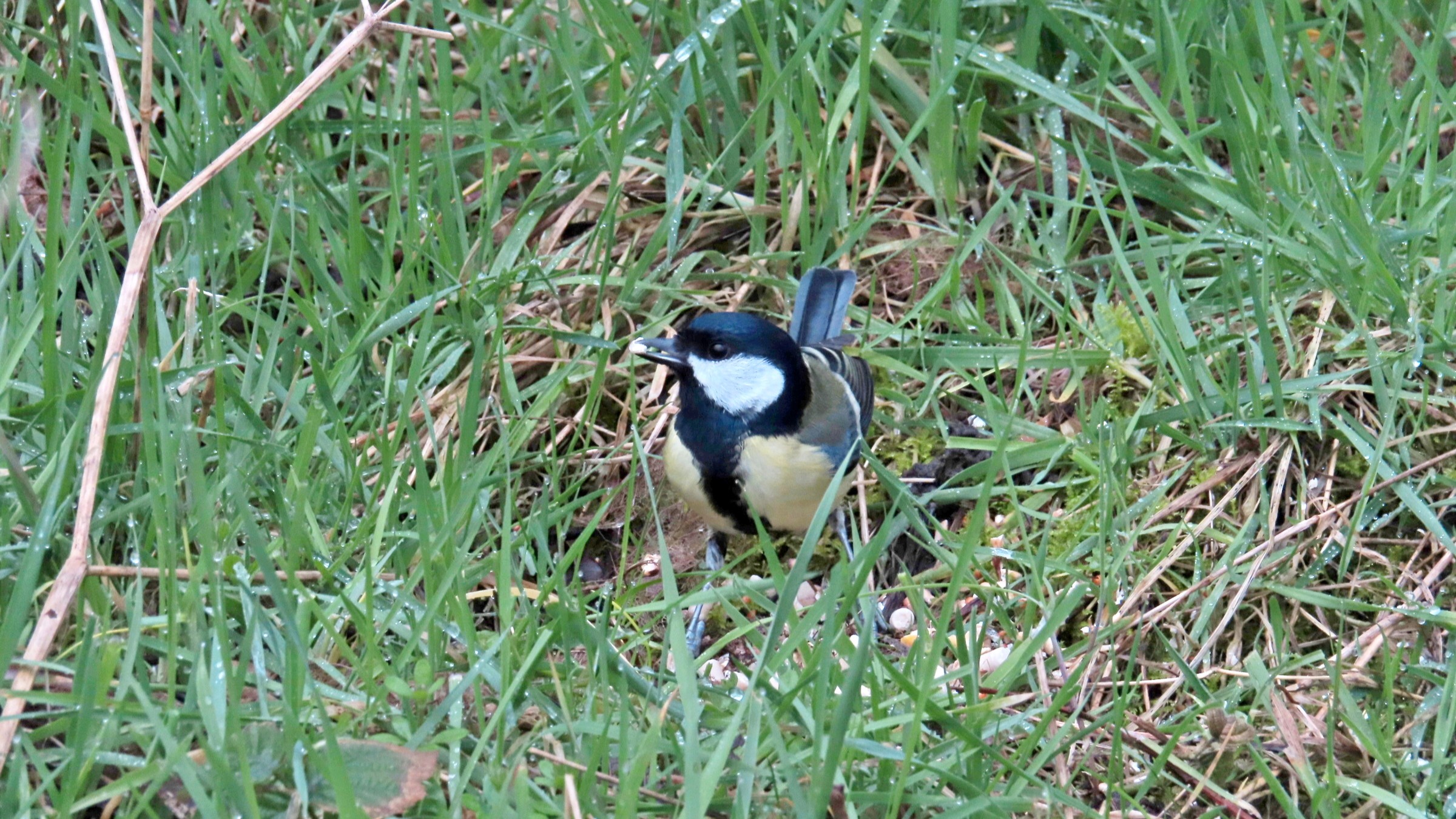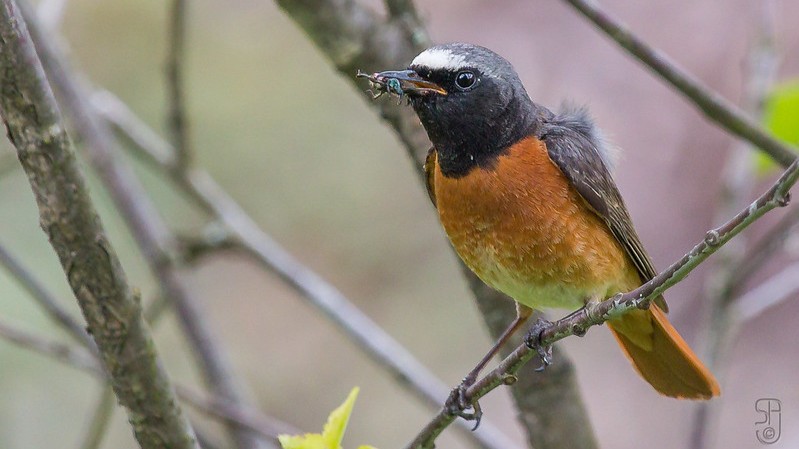Chiffchaffs are commonly heard in May, but now they may be joined by willow warblers. For many, the birds look identical, only being separated by song. The willow warbler tends to be slightly brighter in colour, with paler legs and a more prominent eye stripe. Its song is variously described as a ‘descending cadence’ or ‘liquid arpeggio going down the scale’. A trickle of descending notes with a disappointing ending is a less romantic but equally useful description.
The first half of May is probably the best time to listen to the surprisingly extensive range of calls made by great tits. Of the fifty or more different calls they have many can be confused with the coal tit, marsh tit, chaffinch or even goldcrest. The familiar ‘spring call’ of ‘teacher teacher’ is easy enough, but there are other two syllable calls such as ‘tis-so, tis-so’ with slightly different emphases.
